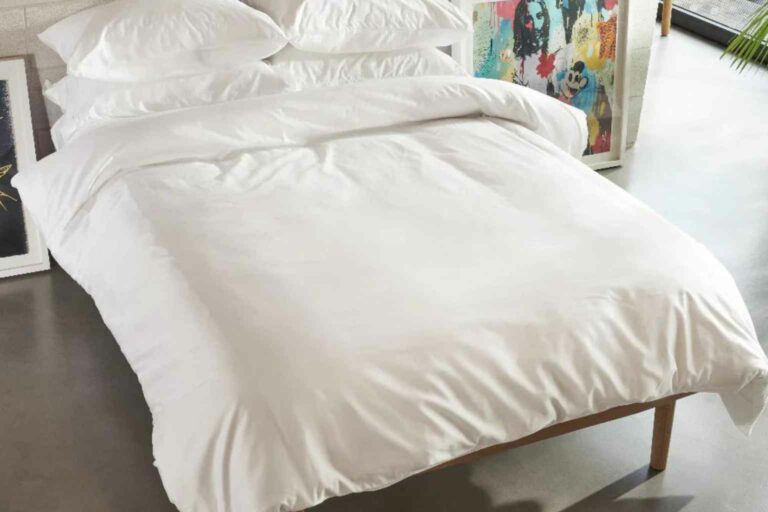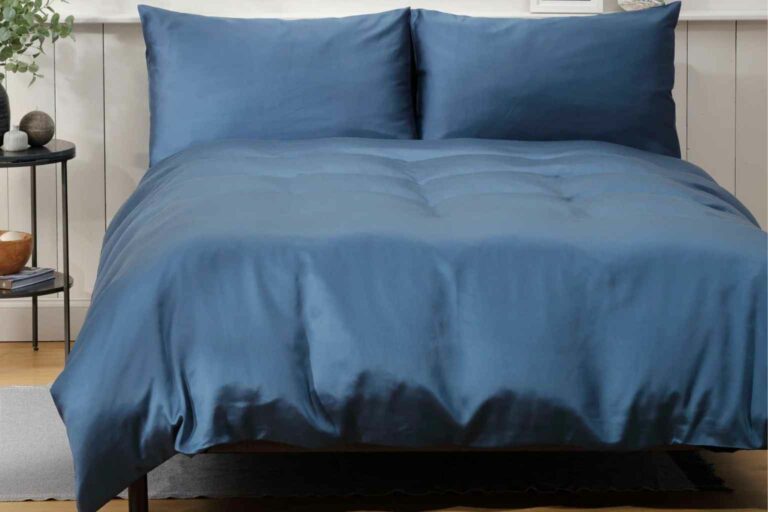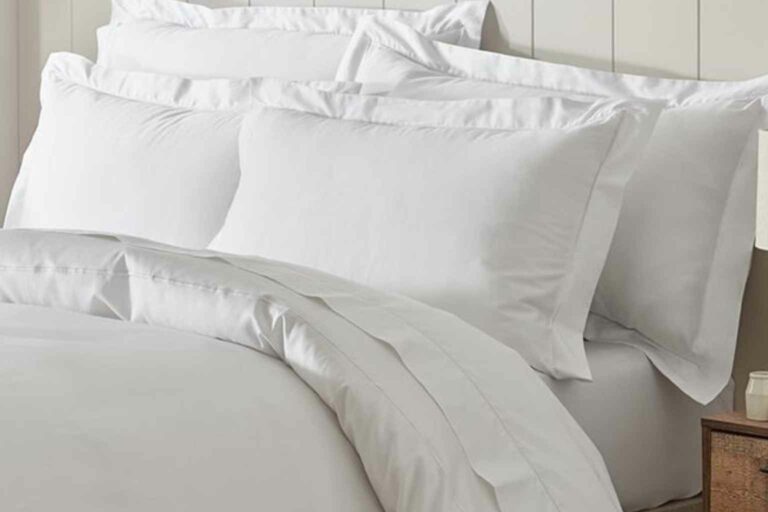
Sustainable Bedclothes: Introduction
Welcome to your weekly sustainability tip from Play It Green! Our community is dedicated to making eco-friendly choices, and with that in mind, we’re focusing on an often-overlooked aspect of sustainability; sustainable bedclothes.
By choosing sustainable bedclothes, you’re not only ensuring a peaceful night’s sleep but also contributing to a healthier planet. In this article, we’ll explore the importance of sustainable bedclothes and how you can make a difference. Join us as we delve into the world of eco-friendly bedding – your guide to sleeping sustainably starts here.
Bedclothes: A History
Bedclothes have been integral to human history, evolving over thousands of years. The journey begins with the ancient Egyptians, who were among the first to use linen, prized for its cooling properties in hot climates. By 6000 B.C., cotton emerged in India, celebrated for its softness and breathability. These early materials set the stage for the future of bedding.
The Renaissance marked a shift towards luxury in bedding for the affluent, with down-stuffed mattresses, embroidered canopies, and elaborate designs. King Louis XIV’s obsession with bedding led to 413 beds in the Palace of Versailles.
By the 18th century, metal bedframes emerged, and the 19th century saw the introduction of cotton sheets, thanks to the cotton gin invention. The 20th century brought diverse mattress types, including water, air, innerspring, and memory foam.
The term “bed linen” originates from linen being the first fabric for sheets, made from flax. Despite cotton becoming more prevalent, the term persisted. The fitted bed sheet, a 20th-century invention, further revolutionised bedding.

The duvet, popular in northern Europe, has unclear origins but gained prominence in the 16th century. Despite initial resistance in England, duvets became mainstream in the 1960s, hailed for their ease of use.
Today’s bedding options cater to diverse preferences, ensuring comfort and a good night’s sleep.
Traditional Bedclothes: Environmental Impact
Traditional bed clothes, particularly those made from conventional cotton, have a significant environmental impact. Cotton farming is known for being water-intensive; it takes about 10,000 litres of water to produce just one kilogram of cotton, which is enough for only a few bed sheets. This high water usage contributes to the depletion of precious water resources, particularly in regions where water scarcity is already a concern.
The environmental footprint of bedding extends beyond water use. The production of synthetic fibres, another common material in bedclothes, relies heavily on fossil fuels. These synthetic materials, such as polyester, are not only energy-intensive to produce but also contribute to microplastic pollution. Each wash of synthetic fabrics releases tiny plastic fibres into our waterways, posing a threat to aquatic life and the broader ecosystem.
Furthermore, the dyeing and finishing processes of traditional bedclothes often involve harmful chemicals. These chemicals can pollute water systems, harming both wildlife and human health. Additionally, the global transportation of bedding materials and finished products adds to the carbon footprint of traditional bedclothes, contributing to greenhouse gas emissions.

By understanding the environmental impact of our bedding choices, we become empowered to make more sustainable decisions. Keep reading to find out how to make sustainable choices when it comes to your bedclothes.
Sustainable Bedclothes: What to Look For
When choosing sustainable bed clothes, there are several key factors to consider. Firstly, focus on the material. Opt for organic cotton, linen, or bamboo. These materials are not only soft and comfortable but also have a lower environmental impact compared to conventional cotton. For instance, organic cotton uses less water and is grown without harmful pesticides.
Durability is another important aspect. Sustainable brands often emphasise the longevity of their products. By choosing durable bedclothes, you reduce the need for frequent replacements, which in turn lessens waste and conserves resources.
Check for certifications like GOTS (Global Organic Textile Standard) or OEKO-TEX, which ensure that the products meet stringent environmental and social criteria.
Also, consider the manufacturing process. Support brands that practice ethical manufacturing, ensuring fair wages and safe working conditions for their workers. This not only benefits the environment but also the people behind the products.

Lastly, pay attention to packaging. Eco-conscious brands often use recyclable or biodegradable packaging to minimise plastic waste. By considering these factors, you can make informed decisions that align with your values of sustainability and ethical responsibility.
Sustainable Bedclothes: Three of Our Favourite Brands
Linen Cupboard
Your first brand, Linen Cupboard specialises in sustainable bedding, offering a range of products made from eco-friendly materials like organic cotton, bamboo, and eucalyptus. Committed to ethical practices, they ensure that their production is environmentally conscious. Their collection includes a variety of sheets, duvet covers, and pillowcases, focusing on both comfort and sustainability. Linen Cupboard’s bedding solutions not only enhance sleep quality but also align with eco-conscious lifestyle choices.
You can explore their products at Linen Cupboard.

Kuroa
Your second brand, Kuroa stands out in the sustainable bedding market with their innovative use of Tencel, a sustainable fabric known for its silk-like feel and durability. Their bedding sets are soft to the touch and environmentally friendly. Kuroa’s commitment to sustainability extends beyond materials to include responsible manufacturing processes. The brand offers a perfect blend of luxury and eco-responsibility, making their bedding a top choice for eco-minded consumers.
Find them at Kuroa.

White & Green
Your final brand, White & Green offers luxurious bedding made from GOTS-certified organic cotton. As a woman-owned, family-run business, they are renowned for high-quality linens sourced from Fairtrade-certified partners. Their products embody sustainability without compromising on style or comfort. White & Green’s commitment to ethical and eco-friendly practices is evident in their beautifully crafted bed sets, making them a leader in sustainable bedding.
Visit White & Green for more.
Use code WELCOME10 at checkout for a 10% discount on your first order.

Sustainable Bedclothes: Wrap Up
In this week’s exploration, we’ve journeyed through the history of bedclothes and understood the significant environmental impacts of traditional bedding production. By choosing sustainable bedclothes, we make a positive impact on the environment, reducing water usage, minimising pollution, and supporting ethical labour practices.
As members of the Play It Green community, your commitment to sustainable choices extends to every aspect of our lives, including where we sleep. These choices, when multiplied across our community, can lead to substantial environmental improvements.
Let’s continue to embrace sustainable options in every layer of our lives. Together, we are building a more responsible and greener future. Remember, each sustainable choice you make, no matter how small, contributes to a larger movement towards ecological responsibility. Sweet dreams and greener nights await us!
Play It Green: Empowering Your Sustainability Journey
Ready to take your commitment to sustainability to the next level? Play It Green stands as your partner in creating positive environmental change. From educational resources on sustainable practices and signposting to sustainable services to initiatives like tree planting and social giving, Play It Green offers a holistic approach to environmental stewardship.
Join us in the journey toward sustainability—embrace eco-conscious practices and be a force for positive change in our world. All whilst staying relevant, meeting legislation and aligning with the values of today’s consumers and employees.







